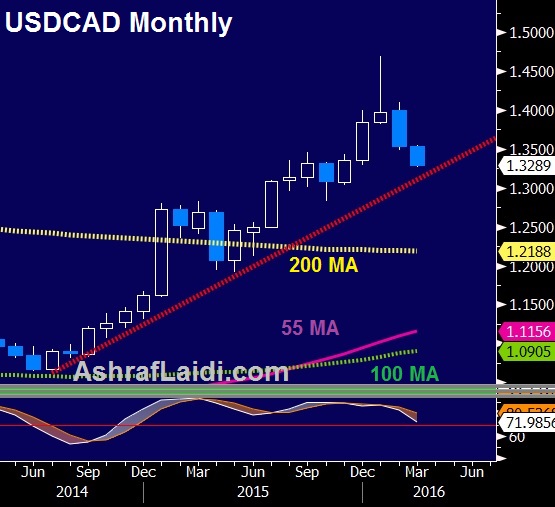Commodity Shorts Crushed, China Trade Figures Next
After big days in metals and oil, we look at what has been fuelling the commodity rally. The Australian dollar was the best performer on the day while its kiwi cousin lagged in a sign of the soft/hard commodity divergence. Australian business confidence, Chinese trade balance and Japanese GDP revisions are due later. A new Premium Video om oil, gold and equity indices will be posted and sent to subscribers about 60 mins after this IMT.
ميزات الذهب الأساسية و الفنية، مع النفط و المؤشرات

There is no science in seeing in a market squeeze, but there are signs. Pockets of the commodity market are moving like traders have no other choice but to buy.
Accelerating gains are one sign of a short squeeze. Oil has risen $3.34 in the past two sessions, having risen just $2.86 per barrel in the seven trading days before. Technicals are often another clue and the break above the late-January high of $34.82 late last week would definitely have spooked the bulls.
Some of the best signs are in positioning data. Like FX, the oil market is extremely large and liquid so some caution is warranted but the net short position was 150k contracts in the latest data.
A clearer example of a short squeeze in commodities was the approximately 20% rally in iron ore on various exchanges Monday. Short interest has risen 210% in 2016 and the FT outlined Monday hedge funds had been shorting metals and miners as a proxy for a China slowdown. With some metals up 50% since January, there is a high probability that funds have been forced to buy back shorts. More margin calls could come in the day ahead.
Two big-picture fundamentals trends kicked off the rally. 1) Better signs on growth from the United States. Aside from OPEC jawboning, nothing has changed in the supply picture but worries about a US recession have faded, especially after Friday's strong jobs data. 2) The comments, deficit and housing stimulus from China were interpreted as a sign of a growth-at-all-costs mentality.
With the cornerstones of global growth – China and the US – looking better, the demand equation is much improved.
Overall global demand remains sketchy. The question about how well developed market commodity exporters will performer remains. A leading indicator is the Australian NAB business conditions survey. It was previously at +5 with confidence at +2. The latest data is due at 0030 GMT.
The other data to look out for is Chinese trade balance. The consensus is for a 12.5% drop in exports and a 10.0% decline in imports. The data is usually released just before 0300 GMT.
Final revisions to Japanese Q4 GDP could also have an impact if they surprise.
| Act | Exp | Prev | GMT |
|---|---|---|---|
| Trade Balance - BOP Basis (JAN) | |||
| ¥188.7B | Mar 07 23:50 | ||
| Trade Balance (FEB) | |||
| 406.2B | Mar 08 2:00 | ||
| Trade Balance (FEB) | |||
| $50.15B | $63.30B | Mar 08 2:00 | |
| GDP Annualized (Q4) | |||
| -1.5% | -1.4% | Mar 07 23:50 | |
| GDP (Q4) (q/q) | |||
| -0.4% | Mar 07 23:50 | ||
| GDP Deflator (Q4) (y/y) | |||
| 1.5% | Mar 07 23:50 | ||
| Exports (FEB) (y/y) | |||
| -12.5% | -11.2% | Mar 08 2:00 | |
| Imports (FEB) (y/y) | |||
| -10.0% | -18.8% | Mar 08 2:00 | |
| NAB's Business Conditions (FEB) | |||
| 5 | Mar 08 0:30 | ||
| NAB's Business Confidence (FEB) | |||
| 2 | Mar 08 0:30 | ||
Latest IMTs
-
Dollar Cannot Wait for Q1 to End
by Ashraf Laidi | Jan 6, 2026 12:40
-
Silver's Signal to Gold Full Explanation
by Ashraf Laidi | Dec 30, 2025 20:04
-
Gold Silver Next الذهب و الفضة
by Ashraf Laidi | Dec 26, 2025 17:15
-
Everyone's Talking about this Risk
by Ashraf Laidi | Dec 24, 2025 14:08
-
2026 Difficult but not Impossible
by Ashraf Laidi | Dec 22, 2025 20:06








